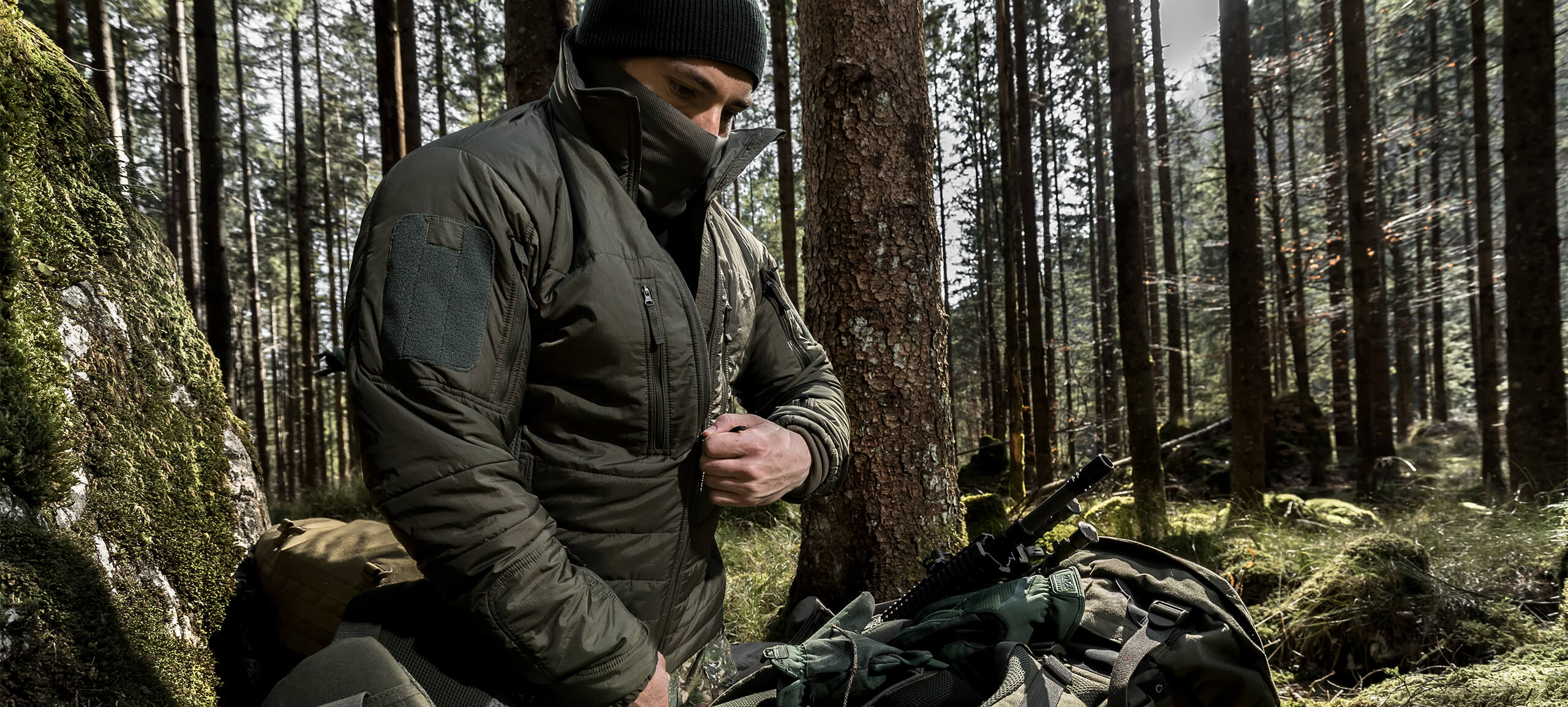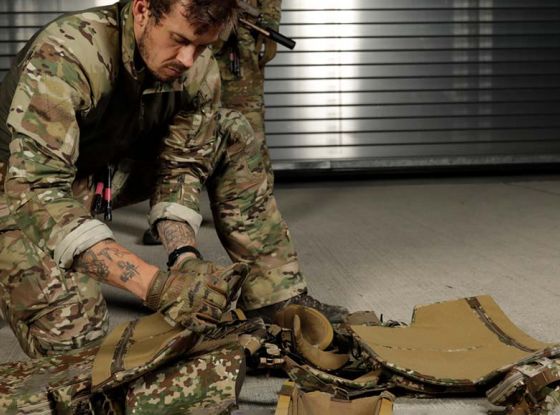Wearing proper layers of clothing can mean the difference between you becoming soaked and freezing or staying comfortable during a mission. Layering is an especially important practice in extreme outdoor conditions such as icy winter weather.
In this blog post:
Introduction
Extreme weather conditions—such as scorching or freezing temperatures and high humidity—affect how your body works and what it needs to keep operating at an optimal level. Clothing is your personal layer of protection against the elements and it needs to work for, not against you. Unfortunately it can’t do that by itself.
So you need a methodology to back up your choice of functional clothing. You need a methodology because you’re the one wearing the clothes—and without it you’re going to find it difficult to understand which clothes in which seasonal climate and daily weather conditions will give you the best results.
Think of it in terms of GORE-TEX®, one of the very best waterproof fabrics on the market today. But even though GORE-TEX® laminates are top-tier, they nonetheless have limitations.
The way this waterproof membrane performs is determined by the external temperature. It works best when it’s colder outside owing to the difference in partial water pressure on both sides of the laminate. Unfortunately, it’s a limitation you can’t get around. As a result, in a high-humidity tropical jungle, the membrane won’t perform as you expect.
Want to know exactly how waterproof laminates work? You can read all about it here.
Right about now you might be wondering what the heck any of this has to do with layering. The answer is everything.
The reason you need to dress in proper layers is there’s no such thing as “perfect clothing”. Even clothes of the highest quality will underperform in certain conditions if not worn as part of a layered set or in correct circumstances.
However, before you can start layering, you have to first know what the different layers are and what they are meant to achieve.
Overview of the layers
The principle of layering can be defined in many ways, but it all boils down to three main components:
- Base layer
- Middle layer
- Outer or shell layer
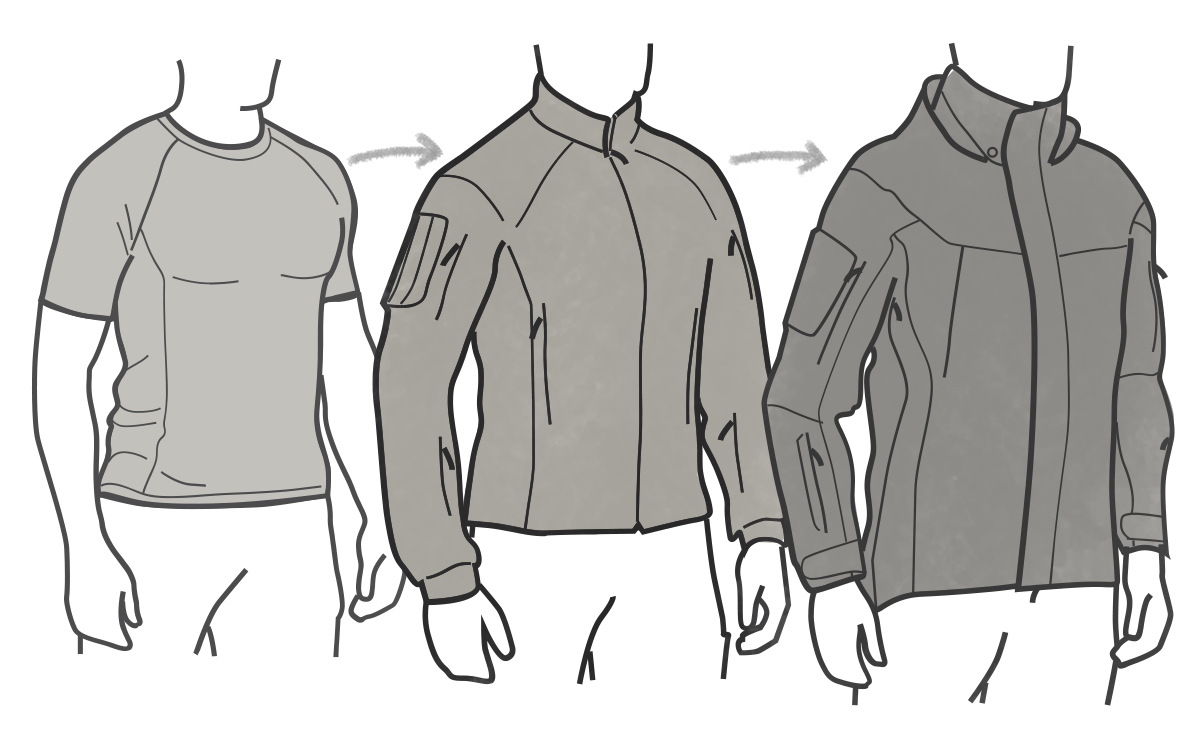
It’s important to recognise that layering does apply just to the clothes you wear over your torso. It also applies to apparel including:
- Headwear
- Gloves
- Socks (and boots)
- Legwear
Those other items are often left out of discussions about layering, thanks to the baked-in examples of jackets and base-layer shirts. The fact is that the layering system works as a whole and can be applied to every garment subsystem from head to toe.
Benefits of proper layering
The most important benefits of layering are its modularity and adaptability to the environment or, more importantly, current conditions (be they external or your own body).
Two notable parameters we must mention are body temperature and moisture management. These are directly affected by the layers you wear. Overdress and you’ll sweat. Underdress and you’ll freeze. With proper layering choices you can be in the sweet spot no matter the season or weather.
Something else we must bring up is comfort. This is particularly an issue in the winter because during that time of year you usually wear more layers than you do in summer. If you go overboard and put on too many layers, you’ll bulk up and hamstring yourself—that’s really critical in the tactical field where the last thing you want is to lose your ability to move freely.
This is where quality, cut, and design of each piece of clothing come into play. Using higher quality garments to form the layers means you can achieve proper protection with minimal bulk.
Base layer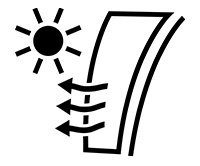
This is the layer worn nearest to your skin. Its purpose first and foremost is to manage the moisture transport from your body to the outside. It does so mainly by means of an efficient capillary effect, but also utilizes air to carry away additional moisture.
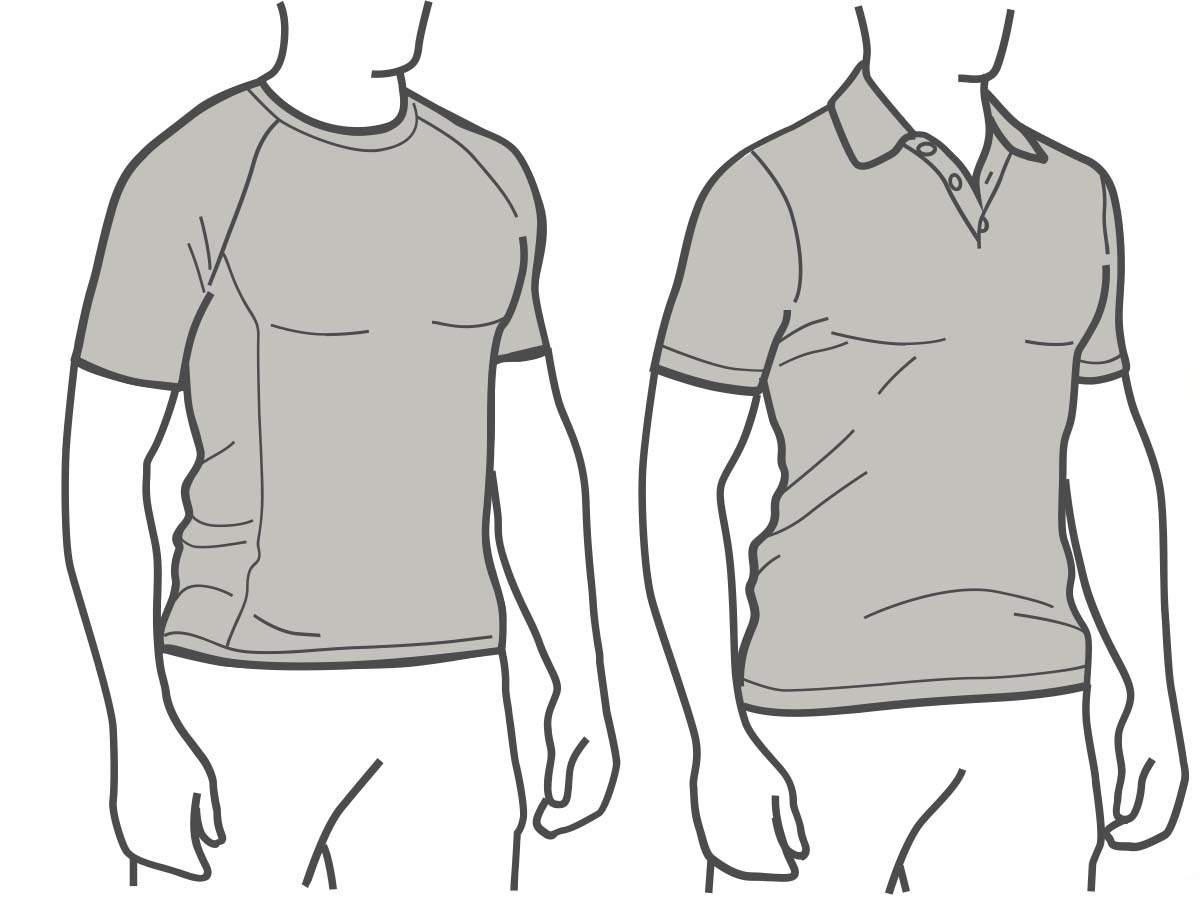
What to look for:
Because this layer directly contacts your body, choose base garments that are comfortable to wear.
This layer is also responsible for wicking your sweat, so choose items with excellent moisture management properties.
You’ll want this layer to be a tight fit yet slightly elastic. Loose undergarments allow air to inhibit moisture transport.
Odour management is vital (especially if you’ll be going for days at a time without a change of fresh clothing). Consequently, choose undergarments made from materials that snuff out bad smells.
A distinctive characteristic of the base layer is it lets you combine two layers but still have them count as one. For example, the Striker X Combat Shirt is a base-layer garment (or if you expand the definitions a bit a mechanical outer layer), yet if you wear a functional shirt beneath it you’ve still got one single base layer. This illustrates that, despite our accustomed ways of thinking, a layer is defined by its purpose rather than by what goes into it.
What you should wear as a winter base layer
One possibility for a winter base layer is Merino wool. It’s what we recommend using beneath the clothing we manufacture. Long-sleeve shirts and long underpants made for winter have unique properties that provide optimal results in managing your sweat and body temperature.
Over a Merino shirt you can wear either a Striker Combat Shirt or an Urban Polo Shirt, depending on your needs and on the scenario in which you’ll be operating.
What you should wear as a summer base layer
Let's start with tops. For tactical or combat setups in warmer climate zones, our go-to base layers are Striker X Combat Shirts and Striker XT Gen.2 Combat Shirts. They serve the same purpose as a functional shirt, despite their outward appearance. If you want to know more about why that is so, please read our Lizard/Skin Material Breakdown here.
For a more urban or casual look in summer, we suggest Urban Polo and T-Shirts. They’re constructed with excellent moisture- and odour-management material, which makes them best suited for high temperatures.
Optionally, you can wear a short-sleeve functional or Merino shirt underneath to boost the moisture management of your system.
Middle layer 
The middle layer provides thermal insulation. It keeps you warm by forming air pockets that effectively trap your body heat between multiple layers of clothing. These pockets are able to lock in heat thanks to their thermal insulation filling.
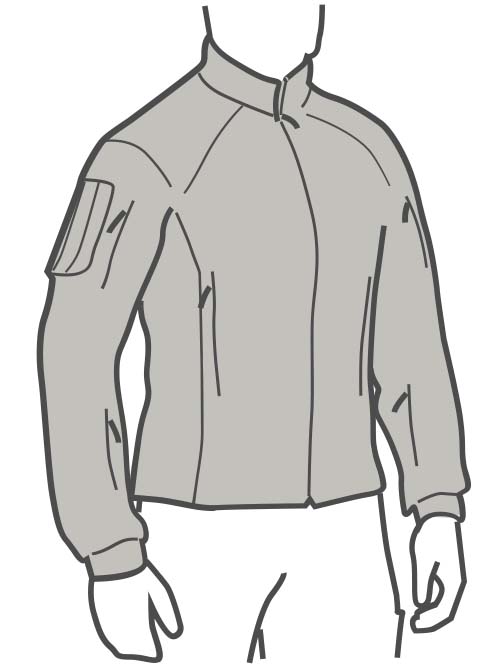
What to look for:
Look for clothing that has top-class fillings, such as down, G-LOFT®, or PrimaLoft® because this layer should offer exceptional thermal-insulation properties.
With this layer you’ll want looser fitting clothing so that air gaps can be created. Those gaps will capture warm air from your body between the base layer and outer shell.
What you should wear as a winter middle layer
For tops, you have multiple choices. It just depends on your needs and the temperatures you’re encountering. The Hunter FZ Gen.2 Jacket is our lightest thermal-insulation layer, perfect for transitional months and the cooler temperatures that accompany them.
In colder temperatures (especially semi-freezing winter months), we recommend you step up to either the Delta ML Gen.2 Jacket or (if you’re looking for an easily packable jacket) the Delta ComPac Jacket. To these you can add a G-LOFT® thermal-insulation layer for optimal warmth.
Outer layer 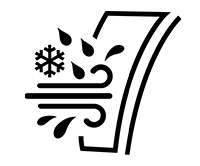
The job of the outer layer is to shield you from the elements. It’s sometimes called a shell layer, but don’t let that confuse you—it’s still an outer layer. As for functionality, the outer layer can be water-resistant, waterproof, wind-resistant, and/or windproof.
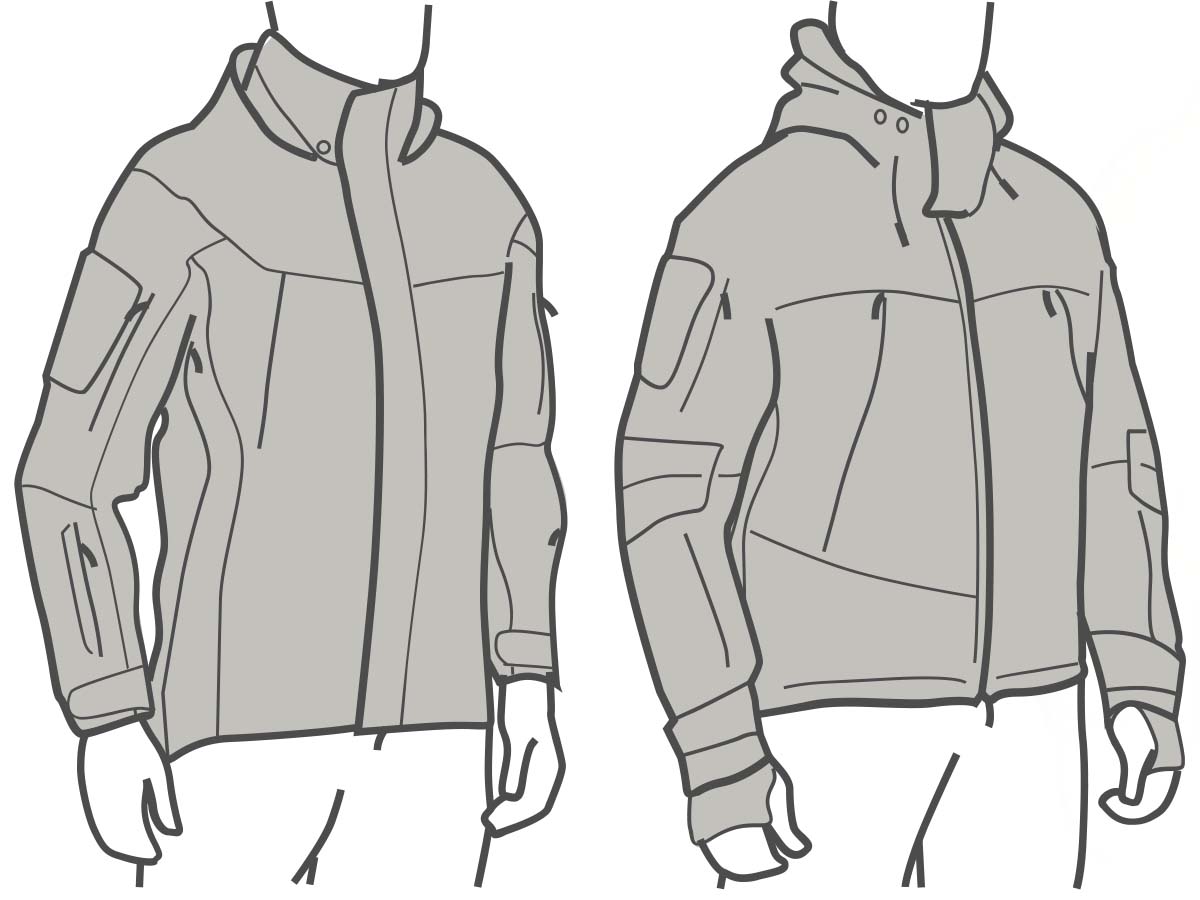
What to look for:
Because this layer protects you from the elements, choose garments made with GORE-TEX® or similarly reliable and high-performing laminates.
This layer can block the transport of moisture, so look for the most breathable materials available. This involves a balancing act because the material, while breathable, still must be capable of warding off rain and wind.
Keep in mind that the outer layer is the final barrier between your sweat and the outside. What that means is that the ability of your whole system to keep you relatively dry hangs on the weakest layer—and usually that’s going to be the outer layer. You therefore will want at all costs to minimize the sweat buildup on the inner side of that outer layer. To achieve that, you need to invest in a garment made from a high-quality (=high performing) membrane.
Summer outer layer choices
In summer, you have just wind and rain to worry about. Our recommended summer outer-layer setup is the Monsoon XT Gen.2 Jacket and Monsoon XT Rain Pants. In addition to protecting you from the elements, these will provide the best moisture-wicking performance amongst available laminates.
Winter outer layer choices
It’s essential during the winter months that you have a water-repellent and windproof layer. In extreme cold, you’ll also find it optimal if your outer layers do double-duty as a middle layer.
That’s exactly what we designed the Delta OL 4.0 Jacket and Delta OL 4.0 Pants to be—clothing that lets you thrive in extreme cold environments where the key to success is staying warm so that you can remain fully operational. This is Option A.
Another outer layer choice if you are highly active are the Delta AcE Plus Gen.3 Jacket and the AcE Gen.2 Winter Combat Shirt. Both serve the same purpose of keeping you warm and preventing overheating in winter conditions. This is Option B.
UF PRO Recommended setups
Still not sure as to which pieces of gear to select from our multiple lines? Here’s a list of our UF PRO-curated setups that we believe will work best in the various climate and weather scenarios you’re likely to encounter throughout the year.
Setup for cold environments when you’re not as active
- Base layer: Merino long-sleeve undergarments
- Base layer: Urban Polo Shirt
- Middle layer: Hunter FZ Gen.2 Jacket
- Outer layer: Delta OL 4.0 Jacket
- Outer layer: Delta OL 4.0 Pants
- Headwear: Watch Cap
Setup for cold environments when you’re highly active:
- Base layer: Merino long-sleeve undergarments
- Base layer: Striker Pants or P-40 Pants with Windstopper Liner
- Middle layer: AcE Gen.2 Winter Combat Shirt or Delta AcE Plus Gen.3 Jacket
- Outer layer: Monsoon XT Gen.2 Jacket (*in heavy snow or icy rain)
- Outer layer: Monsoon XT Pants (*in heavy snow or icy rain)
- Headwear: Watch Cap
Outro
Layering serves a significant role in keeping you comfortable throughout the year and gives you the flexibility to easily handle changes in temperature, weather and environments.
Selecting proper layers is essential for people from all walks of life, but especially so for tactical operatives who need to work nonstop for many days at a time and lack the luxury of being able to return to base or home to put on different clothes every time the weather changes.
Proper setup ensures you’ll stay dry, warm, and comfortable. Above all, it helps your achieve mission success while also keeping yourself and others safe.

